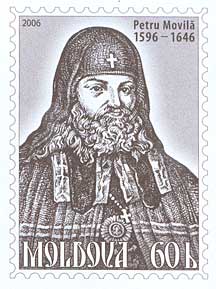
November 16, 2015, by Harry Cocks
The Reformation and the Eastern Church
To the historian of religious change in Europe in its evangelical forms, such as the German, Swiss or English Reformations, the truth of the statement that the Orthodox churches have not experienced a Reformation seems incontrovertible, Liudmyla Sharipova writes. Indeed, in no area of Europe, where the population was exclusively or predominantly Eastern Orthodox in the early modern period, did Protestantism become a religion of the elites or of the masses. This was not always for lack of trying on the part of secular rulers who at times adopted new religious teaching and wished to impose it on their subjects. Yet those scholars whose expertise extends to Catholic revival in the 16th and 17th centuries should think twice before dismissing the Orthodox Church as a potential area of research into the processes of religious renewal in the Confessional Age. In my contribution to the Brill Companion to the Reformation in Central Europe, I suggest that the traditional view, which tends to neglect the process of Orthodox rejuvenation in the early modern period, needs to be updated in line with recent trends in the Reformation historiography.
Confronted with new doctrinal certainties of Latin Christianity resulting from the European Reformations, early modern Orthodox theologians hurriedly tried to find an answer to this shift of tectonic plates. While considered in its own terms the Eastern Church could still pride itself on being unfettered by excessive regulation. It saw itself as contemplative and holy, while to outside observers, caught up in their own struggles for confessional identity, it increasingly appeared to be obscure, inward-looking and moribund. Flailing about in the absence of a fixed, universally accepted Orthodox credal tradition, generations of Orthodox reformers would seek to align their dogmatic teaching with either Catholic or Protestant positions in the hope of finding a “third way” that would be generally acceptable to the Eastern Church.
Using Orthodox reforms in the Polish-Lithuanian Commonwealth as a case study, the essay addresses four major points: first, outside Protestant influences on the Eastern Church, facilitated by the high level of constitutionally-guaranteed confessional toleration in Poland-Lithuania; secondly, the position of the Orthodox Church vis-à-vis the Eastern patriarchs, the Polish-Lithuanian state, and the relationship between the Orthodox Church hierarchy and the laity; thirdly, endogenous reforming tendencies at the grass-roots level and the response of the Orthodox episcopate to this challenge; and fourthly, the significance of the realignment of the Metropolitanate of Kiev in tune with the realities on the ground, presented by the shifting confessional situation. Two overlapping trends can be distinguished in the reform movement within the Orthodox Church in Poland-Lithuania in the period under consideration: what may be called “estates-driven” reforms (1586-1632), as against the reorganization of religious life promoted by the church hierarchy (1590-1646). The former involved townspeople and the Orthodox nobility and may be categorised as calls for a bottom-up religious change. Conversely, the legally-enshrined noble profile of the Orthodox episcopate and its reliance on the state for the realization of their reforming projects makes it possible to describe them as top-down reforms.
Like Jorge Luis Borges’s “garden of forking paths,” at its inception Orthodox reform held the potentiality for several futures. In the last analysis, the protagonists of religious renewal on all sides strove to achieve the same objectives, albeit by different means: to free the church of abuses, to raise its political and cultural status in the Commonwealth society, and to fill the gaps they viewed as deleterious to its progress. The death in December 1646 of Peter Mohyla, (pictured, top, in a Moldovan stamp) the Metropolitan of Kiev who oversaw the introduction of far-reaching top-down Orthodox reforms of the 1630s-1640s, and the outbreak of the Cossack Wars in 1648, in which religion proved to be the most explosive ingredient, meant that the locus of Orthodox revival had to move away from conflict-torn Poland-Lithuania.
Liudmyla Sharipova, “Orthodox reform in the Polish-Lithuanian Commonwealth”, in H. Louthan, G. Murdock (eds.), A Companion to the Reformation in Central Europe (Leiden, Boston, 2015), pp. 223-253 (Brill’s companions to the Christian tradition, 61)
http://www.brill.com/products/book/companion-reformation-central-europe
No comments yet, fill out a comment to be the first

Leave a Reply